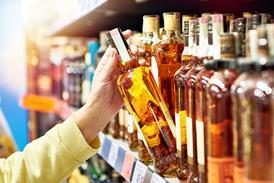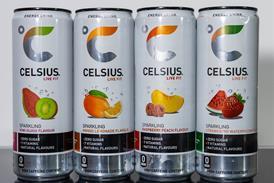As people become more discerning about the quality and heritage of alcohol, craft and bottled beers are booming and there’s a fast-growing range for retailers to choose from
The craft ale category can be a confusing one, but it’s well worth retailers getting an understanding of the category, as according to the Marston’s Annual Bottled Ale Report 2015, the premium bottled ale category is on course to achieve a £1bn category value target by 2020.
“Beer is currently experiencing a ‘craft revolution’,” says Stephen O’Kelly, marketing director for Guinness Western Europe. “This is driven by consumers demanding more authentic and rewarding experiences from the products they are purchasing.”
Mark Harding, sales director at Bath Ales, agrees that consumers are becoming “increasingly discerning” about the drinks they choose, with quality products stealing market share from mainstream brands. “There is a strong consumer trend for something a bit different, more flavoursome and a product of quality, which is why some products are perhaps not as popular as they once were.”
The great news for convenience retailers is that premium bottled ale is growing at 11% in the off trade (Nielsen Scantrack). There are plenty of lines for retailers to choose from as there are now more than 1,300 breweries in the UK – more per capita than any other country – and this provides an opportunity to search out favourites or local brewers and create a real point of difference in store.
East London retailer James Brundle has a range of about 200 lines of craft beer in his Hackney Eat 17 Spar store. He says the category is perfect for his store as it offers many niche products.
“We like to source things people can’t get elsewhere – it’s the same with our food. There’s no particular brand that stands out; I just think the whole concept does well. You have to be knowledgeable about what you’re selling. I gain insight by reading trade magazines and just keeping my eyes and ears open to what’s on the market,” he says.
Sue Cooper, co-owner of Little Valley Brewery, says shoppers now see craft beer as a current and exciting movement to be a part of, and as such are eager to experiment with different types. She says: “Convenience store retailers must capitalise on this trend and keep up with the rest of the market, in order to effectively generate sales and revenue within the beer category.”
While craft drinks have revolutionised the alcoholic drinks industry over the past decade, it seems that many Brits are still unsure as to what the term ‘craft’ actually means. According to Mintel, a healthy 38% of Brits bought a craft alcoholic drink brand in the three months to November 2015, and yet 30% of Brits who buy alcoholic drinks said they don’t understand what the term ‘craft’ means.
Although there may be a number of different definitions depending on which brand or distributor you speak to, it is generally accepted that a beer can be labelled ‘craft’ if it has been brewed by a small, independent brewer. These beers are usually created over a longer period, using high-quality ingredients, and are therefore priced at a more premium level. They also tend to offer a unique taste and are often easy to spot on shelf thanks to their quirky labels.
Some customers are most interested in the locally-brewed craft beers, according to Teresa Rigby, store manager at Spar Ludlow – which stocks about 30 craft beers.
“We first started doing the range about 18 months ago when customers started asking about locally-brewed products. Because of where we are located, there are a lot of local breweries. Getting these beers in definitely helped to create customer loyalty. We have a large selection of customers who will come in especially for these products now,” she says.
Guy Warner, of Warner’s Budgens in Gloucestershire, points out that local ales make up 60% of his Winchcombe store’s total ale sales. Mehmet Guzel, of Simply Fresh in Bethnal Green, East London, has a range of about 20 craft beers, and about a dozen of these are locally-brewed. He says they sell themselves. “It catches people’s eyes if they see their home town written on the label. It’s a loyalty thing as well, giving business to local brewers,” he says.
This could be because consumers are increasingly “curious” about the products they purchase, according to Guy Dodwell, Diageo sales director for GB off trade.
“They are interested in the craft that goes into products and as such want to know the story behind how their product has been made, what the provenance of the product is, and whether there is a story with real substance behind the product,” he says.
With provenance now becoming a key driver for sales, Cooper argues that retailers should make the most of their craft range by providing information to emphasise this selling point.
“It is no longer enough to simply label a beer as ‘craft’, as the customer will want to know exactly what makes it craft and where and how it has been brewed. We include tasting notes and a description on all of our beer labels, so that retailers and customers alike can easily find out more about the beer.”
Guy has really gone all out to encourage discovery. “The local ale category is signposted with bespoke ‘Discover Local’ POS material, which tells the unique story of each local supplier. Certain suppliers and special offers are also highlighted on digital media screens which have been incorporated into the display. We merchandise these in wooden boxes which really drive standout on shelf. It’s a fascinating and emotive category that you can have lots of fun bringing to life, and shoppers love it.”
Teresa’s store goes above and beyond to teach customers about the heritage of their beer. “I would say one of the most important things is to advertise your offering. We have a board outside the shop. It includes the names of the beers and where they come from, alongside a map to show where each brewery is located. That captures a lot of attention,” she says.
“We also have leaflets, given to us by the breweries, which shoppers can pick up, which give lots of information about them and their heritage.”
A brew especially for summer
Beerd, the craft brewery owned by Bath Ales, has introduced a new saison beer for the summer. The brew has been matured over a couple of months to deliver a unique flavour.
Limited-edition Ego (7.4% ABV, rrp £9.95 per 750ml sharing bottle) is a full-flavoured brew combining the flavours of orange marmalade, banana and clove with hints of lime and coconut. True to the saison style of beer, it is unfiltered, unpasteurised and naturally carbonated.
Beerd brewer Joe Clayton says: “With Ego we wanted to create a robust, fruity ale to give beer drinkers a refreshing option for the warmer months.
“We’ve married together hard-hitting, tropical flavours and matured the brew over the winter to create an even fuller flavour.
“Presenting Ego in a 750ml bottle will appeal to those looking for a beer to enjoy at social occasions and share with friends.”
It’s because of this growing interest in craft and heritage that even the big brands are pushing their craft lines. Guinness, for example, recently rolled out a new seven-figure campaign for Hop House 13, which was designed to drive awareness of the launch and showcase the quality and craftsmanship of Hop House 13 (rrp £1.79 per 330ml). The TV ad traces the journey of Hop House 13 lager from its creation in the pilot brewery at St James Gate, in Dublin, to celebrating people’s first sip of this lager in Hop Store 13.
Playing on the desire for provenance, the brewing giant also recently launched its new Dublin Porter and West Indies, which are described as updated versions of historic recipes from the brewery dating back 145 years.
Modern craft beers
Edinburgh brewery Caledonian has made two of its modern craft beers available to the off trade: American-inspired pale ale Coast to Coast; and craft lager Three Hop.
Coast to Coast, a 4.6% ABV variant, is the first beer to be developed in the firm’s new pilot plant, named Wee George after Caledonian’s founder George Lorimer. It is a bronze ale, brewed with full leaf fresh-packed American hops imported from Yakima Valley on the West Coast of America, married with British East Coast maritime malt.
Its recipe results in a strong hop character, including two UK-first Yakima Valley hops, which is combined with notes of lime, passion fruit and kiwi fruit.
Three Hop was first created for the off trade in 2014 and is brewed with three of Europe’s finest hops to craft a rich 4.5% ABV beer.
Caledonian says this distinctive lager carries spicy herbal aromas, a hint of honey and a slight minty note.
Both Coast to Coast and Three Hop are available in 355ml bottles, with an rrp of £2 each.
Today’s trading controller David Warren warns those retailers who are thinking of dipping their toe in the craft pool that simply stocking one or two SKUs will not be as effective as offering a full range. “This will be much more profitable and could encourage craft beer drinkers to try something new. It is also important to remember that this category will set you apart from other retailers, allowing you to win consumer loyalty,” he says.
Different styles of beer suit the different seasons and this should be reflected on the shelves. For the warmer weather, consumers tend to favour lighter pale ales that have a more refreshing, fruitier taste profile. A new line has just been introduced to Bath Ales’ Beerd range called Ego. It’s served in a 750ml sharing bottle and has a fruity profile.
Prices will also vary within this category. Guy runs ‘Any three for £6’ deals on some of the local ales and Teresa runs a similar deal, selling some of the range at three for £5.50.
While promotions are always good for capturing attention, they are by no means a necessity. Thanks to the expectation of a premium price, retailers can also be brave with their pricing. Many craft brewers will not put their beers on promotion as they don’t want to risk their product being devalued, according to Warren.
Mehmet exemplifies this as he manages to sell some craft beers at £11-£12 per bottle. Granted, these will only be limited releases or those with higher-than-usual alcohol content, but it shows how much some shoppers are willing to pay for the right product.
James cautions that the higher price point means that the category may not do well everywhere. “I don’t think it would work in all areas of the country as there is a fair price difference. We can sell a bottle of craft beer for anything from £2.49 to £5.”
Evidently, there are no hard and fast rules on how to get great sales in this category as many of the choices need to be shopper-led, but it is important for retailers to be knowledgeable about the craft beer they do stock. Eye-catching pos material in and outside the store, tasting notes and information on the brewery will help to demonstrate this awareness. Add to this a good range of locally-brewed ales and enjoy the response as this category catches new and adventurous consumers.
Diageo’s merchandising principles
Range: stock the best-sellers and put the focus on your premium product offering, highlighting any new and growing product areas to ensure customers can pick up new trends in store. Display premium products above value products
Layout: ensure customers can find their must-stock items easily. Blocking vertically by category first, then brand and finally size will help to do this. Ideally, shoppers would like to see all bottle sizes by brand ranged together
Eye-catching POS: use POS materials to draw attention to new, growing, seasonal or promoted products
Category insight: ensure that you are communicating a compelling reason to buy products on promotions
Price-led communication: ensure the rrp and the actual versus the promotional price is clearly communicated to shoppers.

























No comments yet